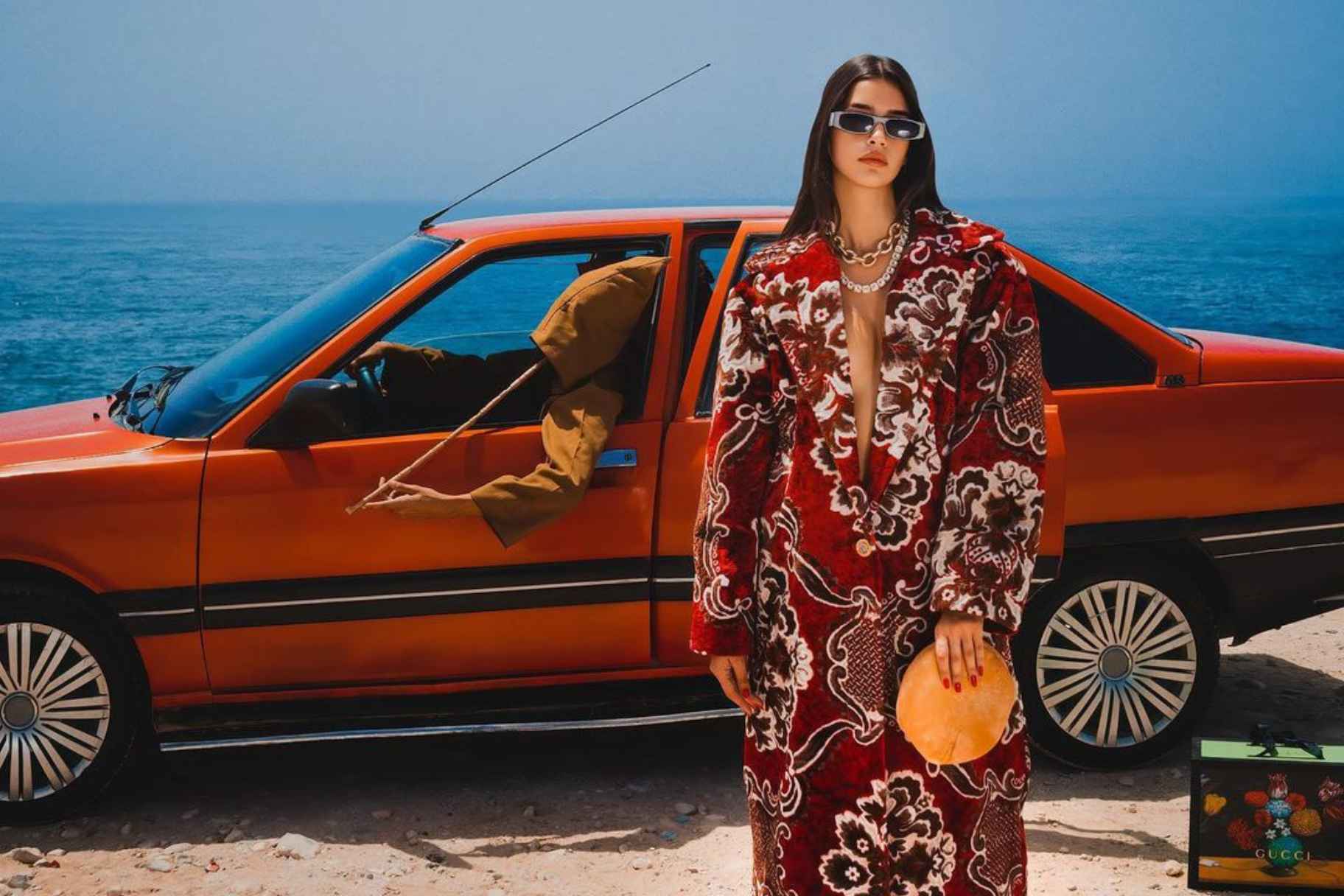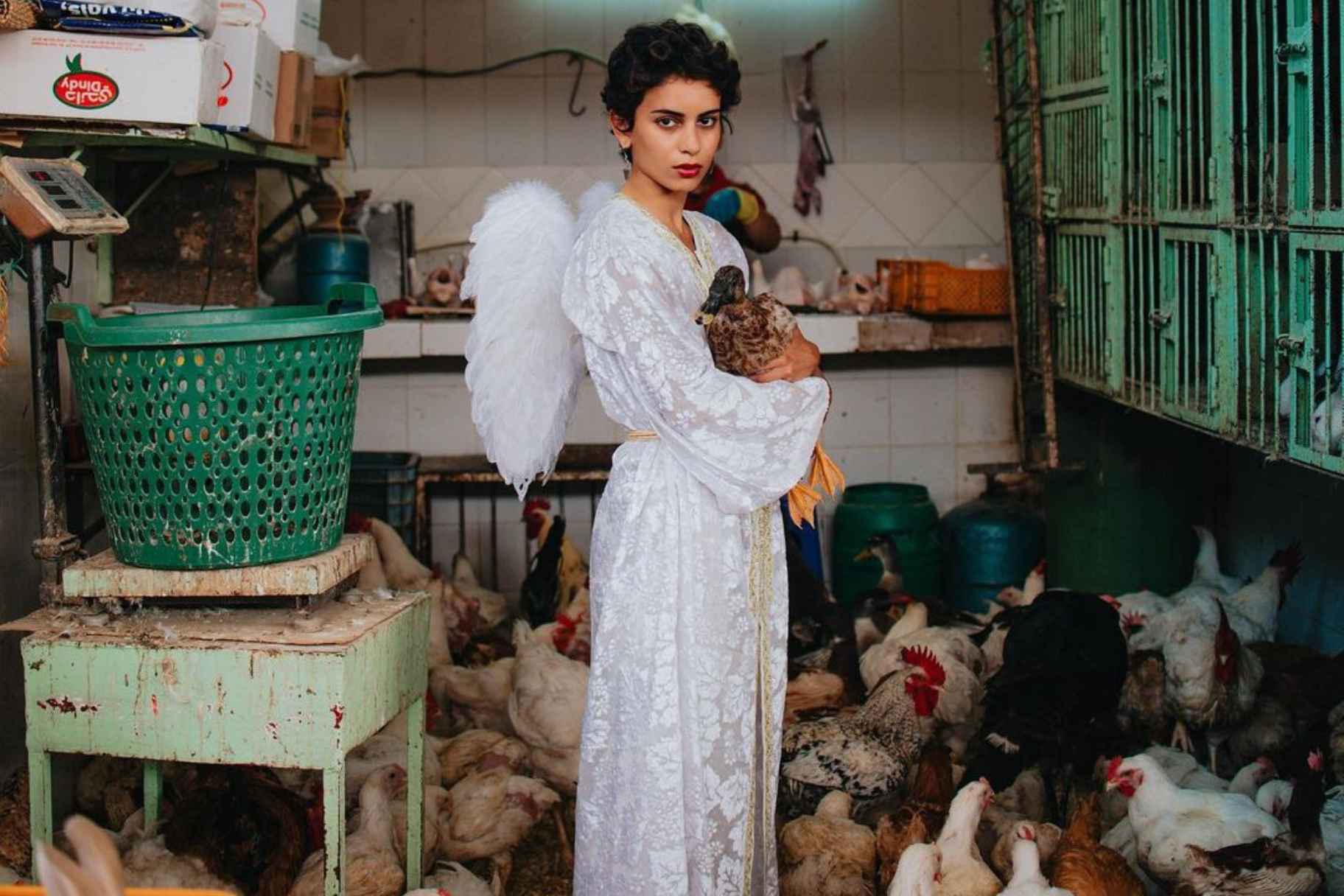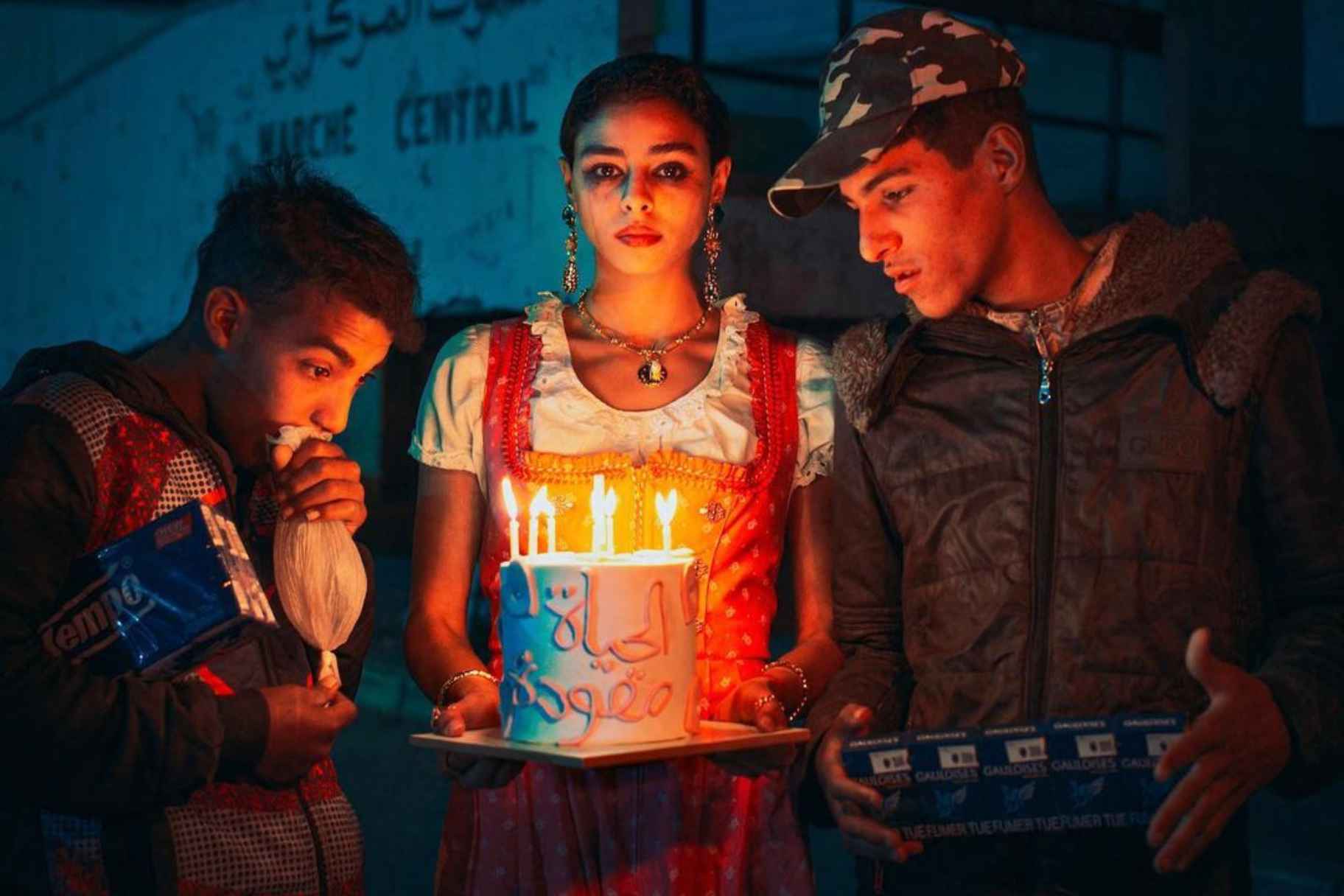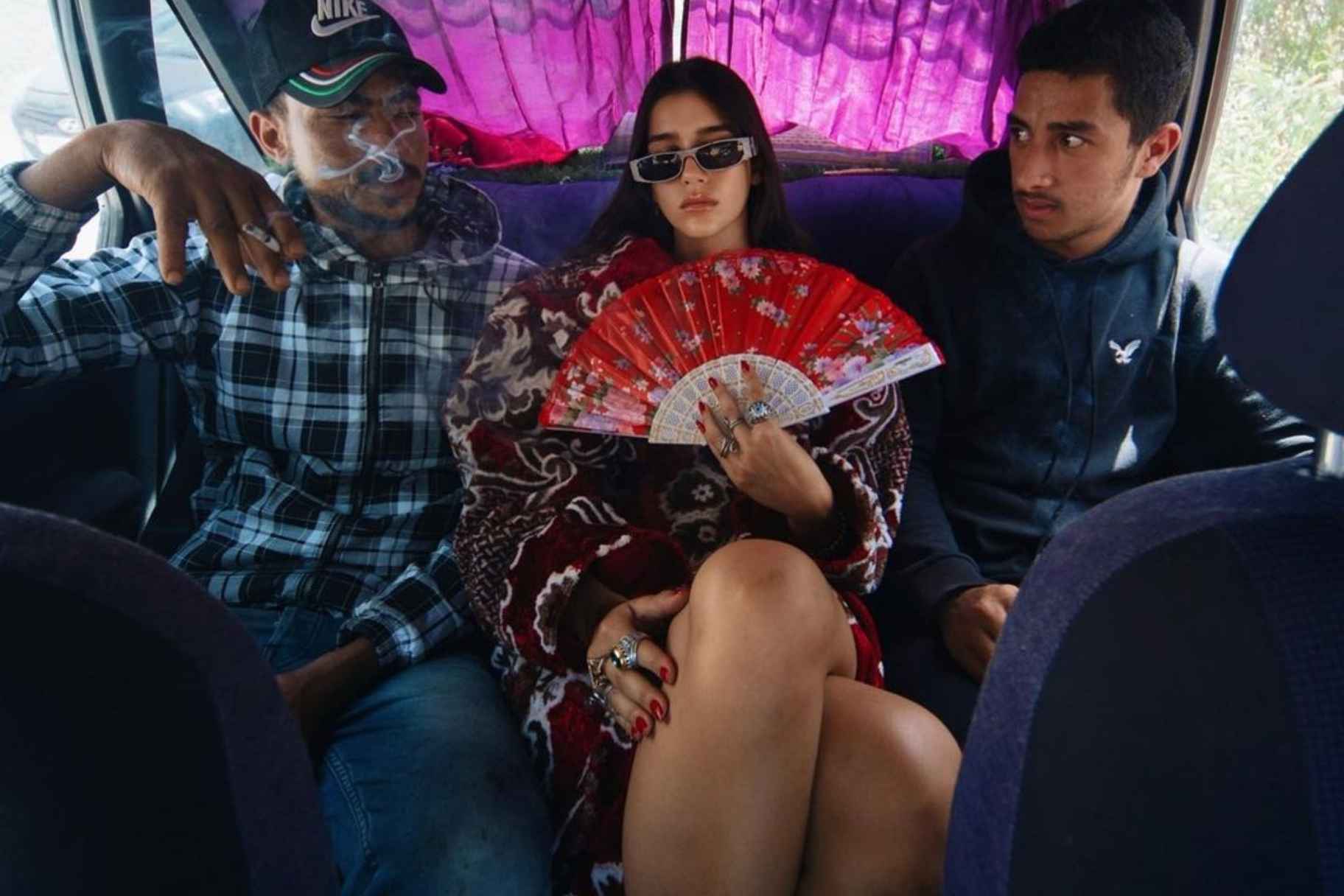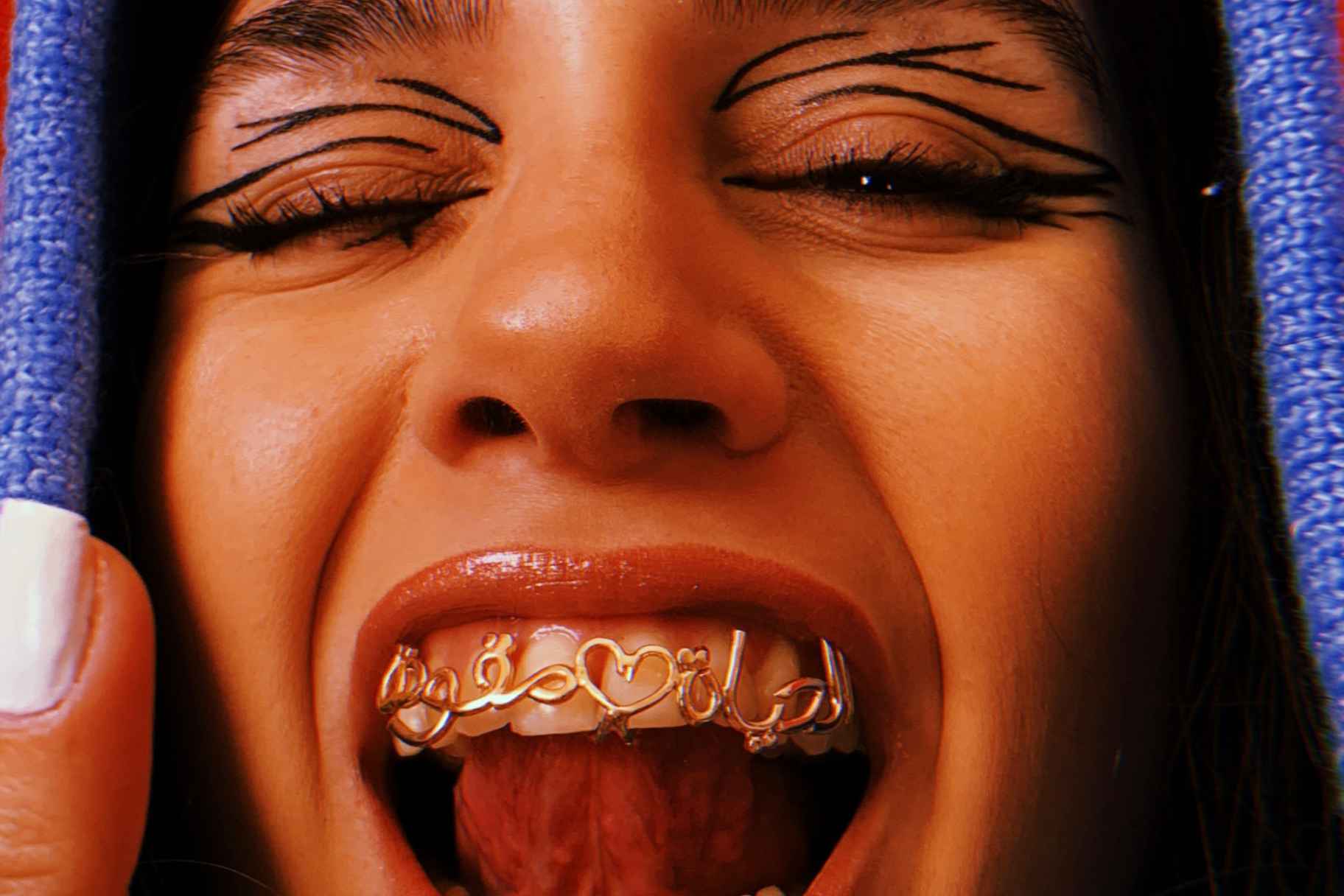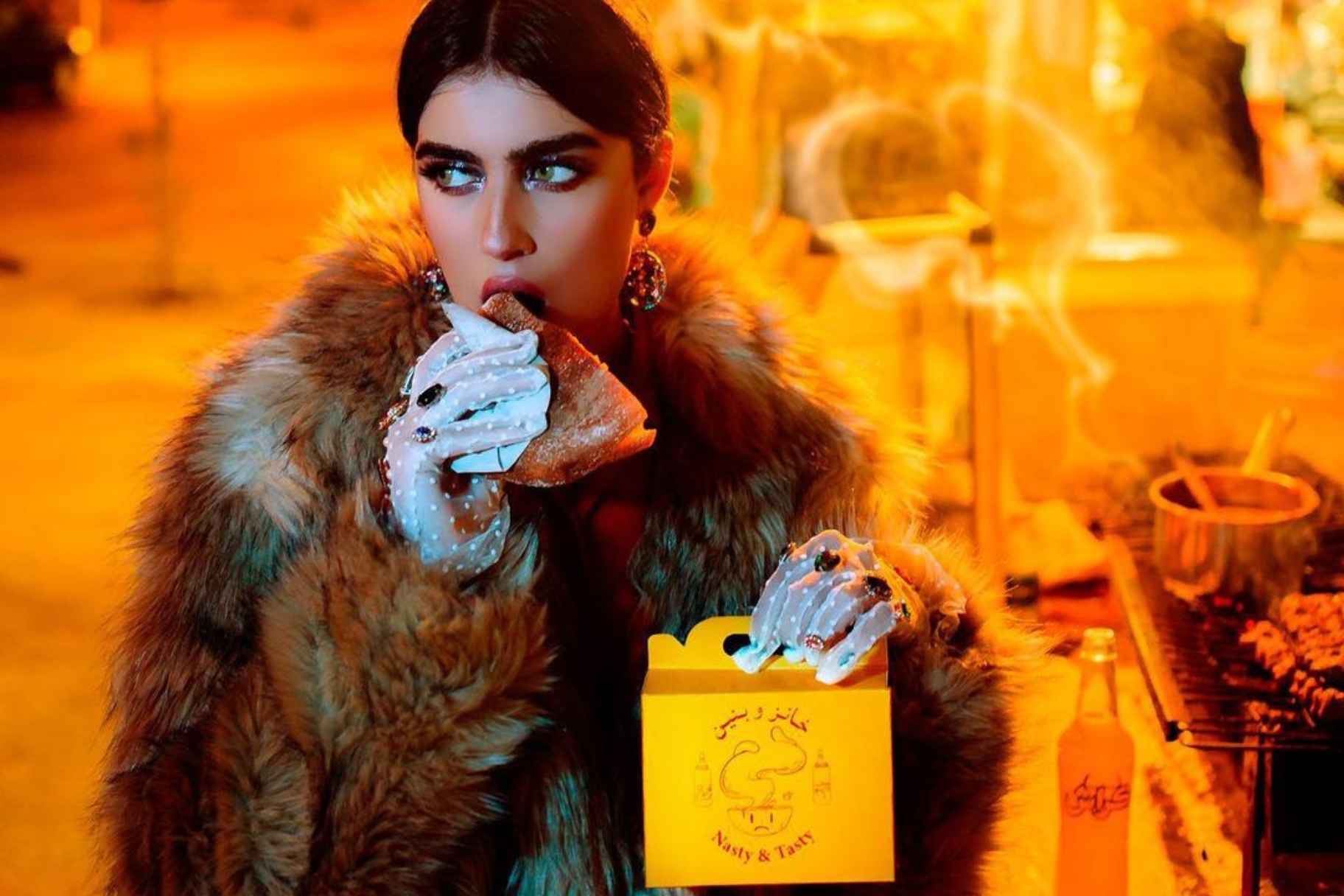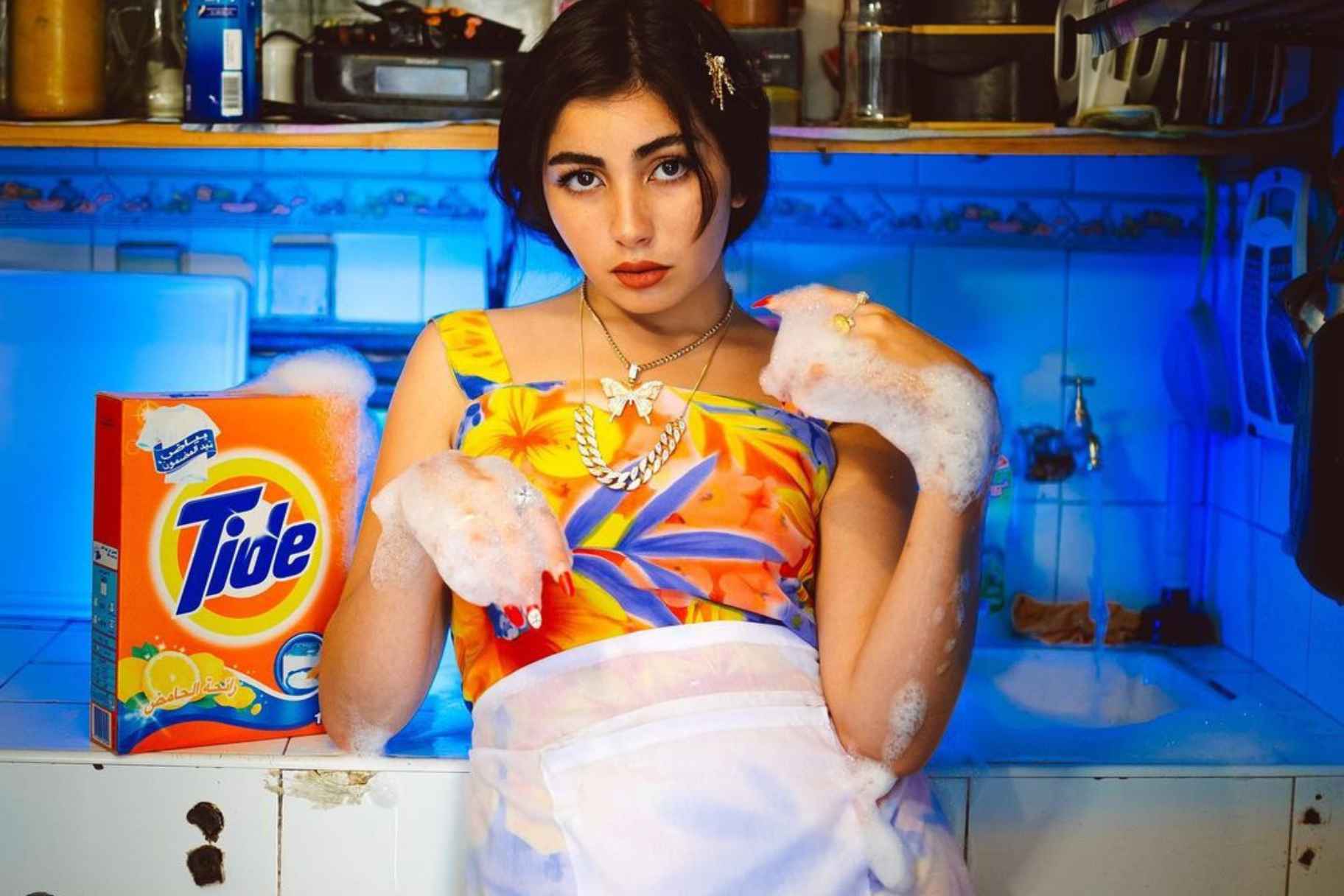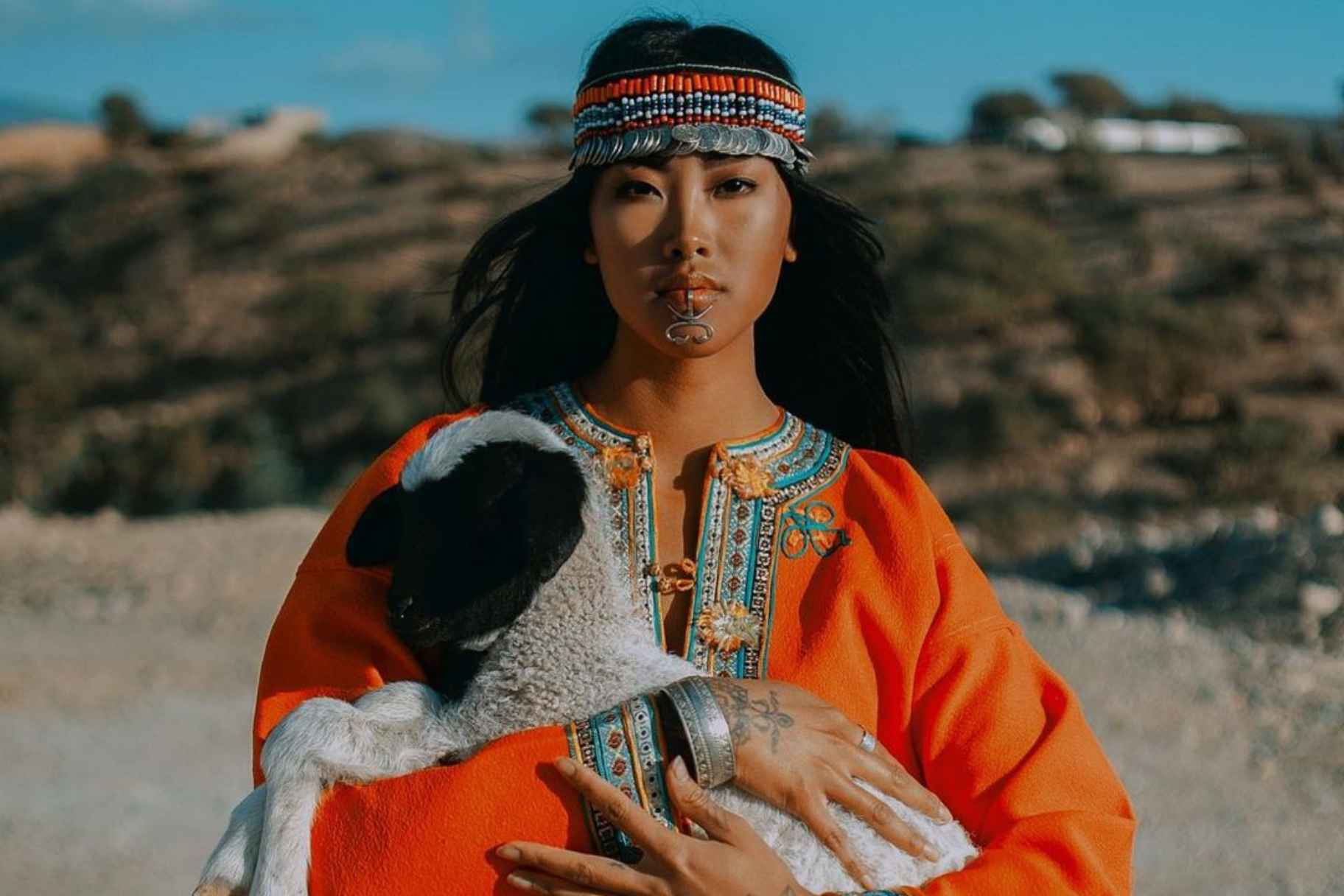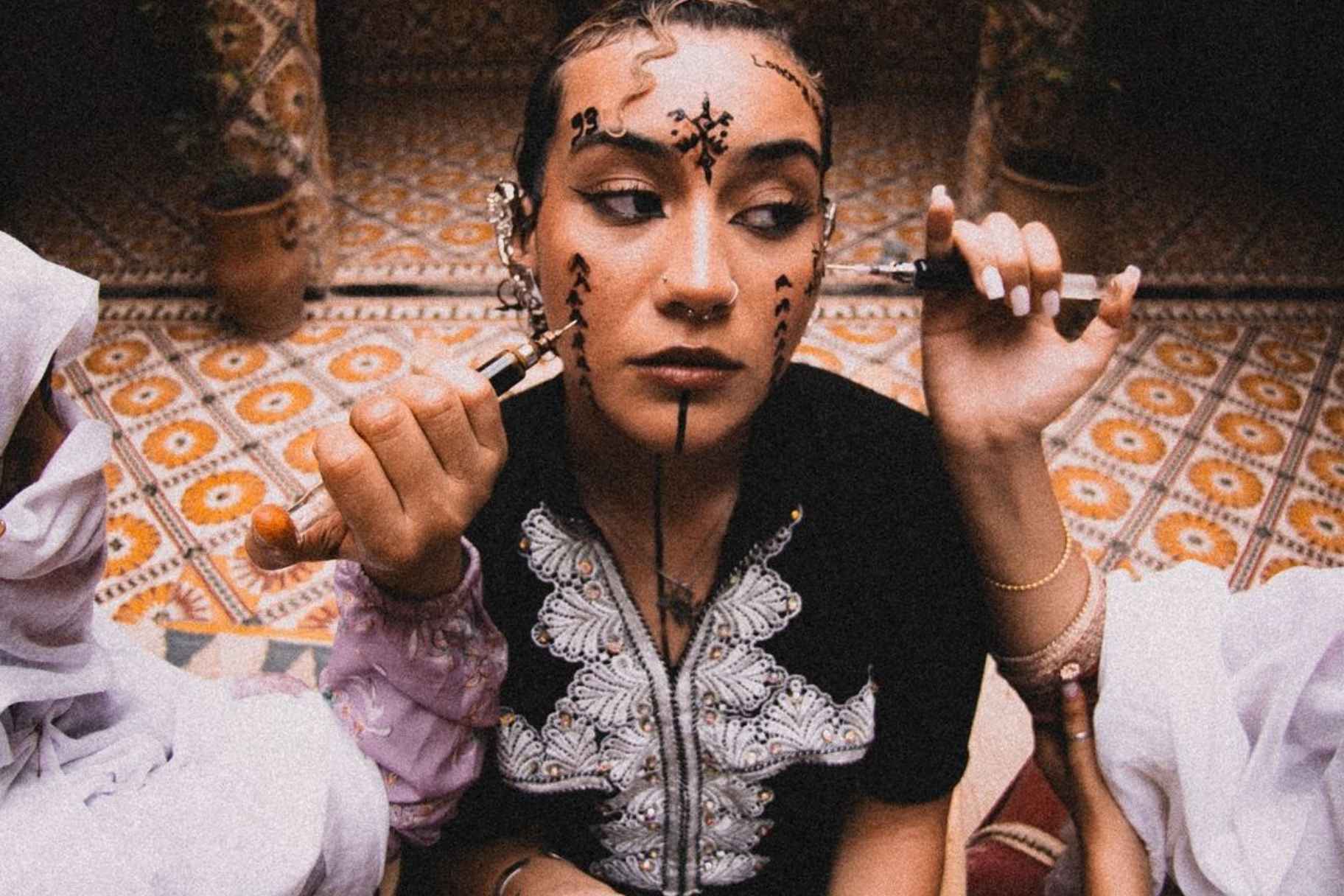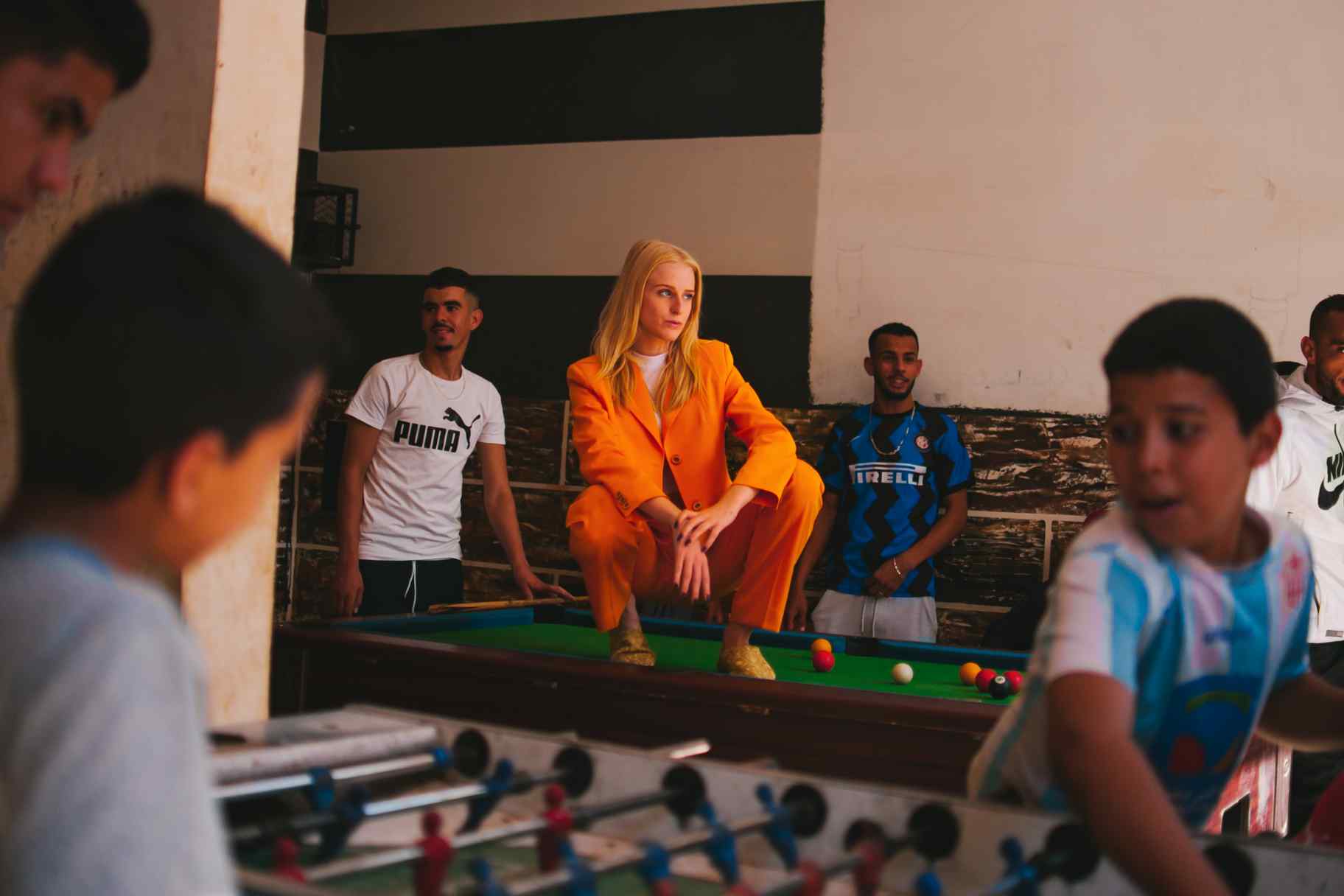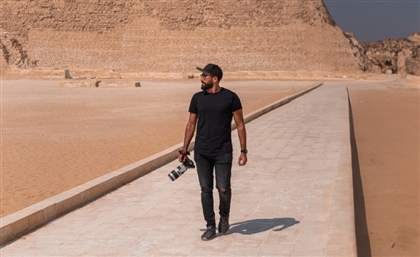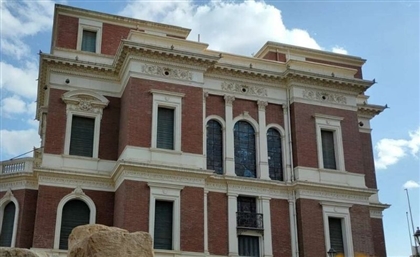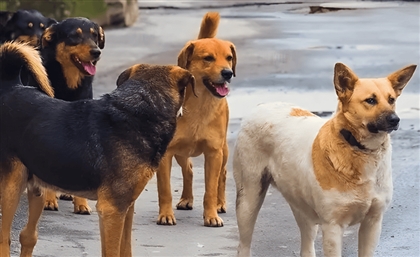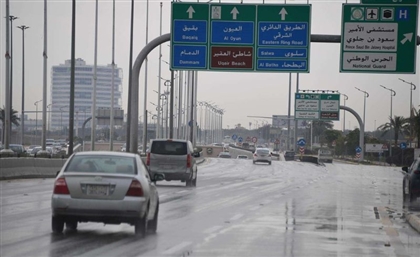Nassereddine unveils the themes behind ten of his vibrant photos, exploring their cultural nuances and artistic intentions.
Moroccan creative Nassereddine Anjar transitioned from waxing poetry and reciting Abdellatif Laâbi in college, where he majored in literature, to defying his family's expectations and pursuing a career in photography and art direction.
Operating under the moniker ‘Eyesofnasser,’ Anjar has been a presence in the industry since 2015. He started with phone photography and eventually saw his work published in French photographer Fifou’s collaborative book ‘New Gen,’ which was later exhibited in Paris alongside fellow featured artists. Beyond his passion projects, he has photographed prominent figures such as Moroccan/French rapper Nayra and Moroccan singer Manal Benchlikha. In 2019, Anjar co-founded the Moroccan-based image consultancy agency ‘Uniqueness,’ through which he has undertaken more commercial projects.
"From the beginning, my source of inspiration has always been my city, my surroundings, my culture, 90s Amazigh movies, and my childhood," Nassereddine reflects. His work offers a unique window into Moroccan life, juxtaposing the cultural context with modern subjects, pop culture references, and playful set designs. Through his lens, what might seem like ordinary streets are transformed into luminous explosions of colour and saturation. "My work offers a different view of Moroccan heritage. I see what others can't see in my culture."
Dear Khettaf, take me to Getafe!
Eyesofnasser: Hero or criminal? For those unfamiliar of the controversial figure in Morocco, ‘The Khettafs’ are undocumented drivers without any formal regulations or licences. A lifeline for isolated rural areas with limited transportation options, these drivers are providing a much-needed service that the government has failed to provide. Overcrowded and unregulated, their vehicles pose significant safety risks, yet they are still an integral part of Moroccan village life in which they villagers rely on to get around.
Dajangel
Eyesofnasser: In every old soul alley or superglobal capitalist market, guardian angels are sent to carry the souls of our future food. Nor our physical cages, nor the cages of existence itself are an obstacle for these shining celestial creatures. This photo’s inspiration came from the idea that every food source is guarded by angelic beings, contrasting this with the harsh realities of butchering, industrial farming and consumption.
La Vie En Rose
Eyesofnasser: This is my favourite photo I’ve ever taken. It was inspired by the Moroccan movie ‘Ali Zaoua’ by Nabil Ayouch. We decided to work with real homeless individuals, or SDF, and they were under the influence of drugs. As we set up and began shooting, the atmosphere was raw and authentic, reflecting the gritty reality we aimed to capture. While shooting this, I felt a stark contrast between the beauty we sought to portray and the harsh realities of the lives we were documenting. The cake is brighter than the alleys they live in. Brighter than their future.'
This photo is a powerful reminder that even in the most difficult circumstances, there is still hope and beauty to be found. It shows the strength of the human spirit and the importance of empathy and compassion towards others who may be struggling.
Feel the ZHAM / زحام
Eyesofnasser: This photograph extends the narrative of the ‘Khettaf’ by focusing on the car's cramped interior. The image conveys the claustrophobic conditions, showcasing the lack of space. I used this photo to highlight the challenges that both the driver and passengers face during their journey.
Mixed feelings
Eyesofnasser: The Arabic inscription on the grillz reads, "Life is fucked up”, just like the cake in the ‘La Vie En Rose’ picture. I wanted to capture the internal turmoil of those who mask their sadness with an outward appearance of happiness. There are many people whose lives are ruined for years, but they never show it.
Khanz w Bnine / Nasty & Tasty
Eyesofnasser: Khanz w Bnin is the cheapest sandwich available in Morocco, and is now only sold in university neighbourhoods or the outskirts of the city due to urban redevelopment. Its vendors have long faced challenges with authorities, a local threat to global fast-food giants. Interestingly, there is a smoky heart on the packaging, which is meant to symbolise the ‘I'm lovin’ it’ slogan.
Rwina at the cucina
Eyesofnasser: The Moroccan woman is stronger than a machine, taking on various tasks every day such as washing dishes, cooking and cleaning. We should recognize and appreciate the valuable role that Moroccan women play in their families and society as a whole.
TAMGHART
Eyesofnasser: Tamghart is the embodiment of womanhood in Amazigh culture. As we can see in the picture, the model is not from Morocco, but she perfectly fits in with our traditional elements, including the caftan and accessories. Instead of henna, she wears tattoos in their place, a beautiful representation of how our culture is not limited to borders or geographical boundaries, but rather, a way of life.
Contemporary Roots
Eyesofnasser: This portrait of French rapper Nayra stands out by showcasing a blend of contemporary and traditional elements. The portrait highlights the innovative hype surrounding face tattoos, merged with traditional Moroccan/Amazigh henna designs. Bold lines reminiscent of tattoos intersect with intricate henna patterns on her face and hands. This composition integrates modern hip-hop aesthetics with classic Moroccan artistry.
Derb Ball Pool
Eyesofnasser: ‘Derb’ means neighbourhood. In Morocco, popular billiards halls have traditionally been considered exclusively for men, and girls are often discouraged from even passing by. These halls are also notorious for their links to addiction, with many older Moroccans recalling that their first experiences with addictive substances began in these spaces. As a result, the number of these traditional billiards halls has significantly decreased in recent years.

